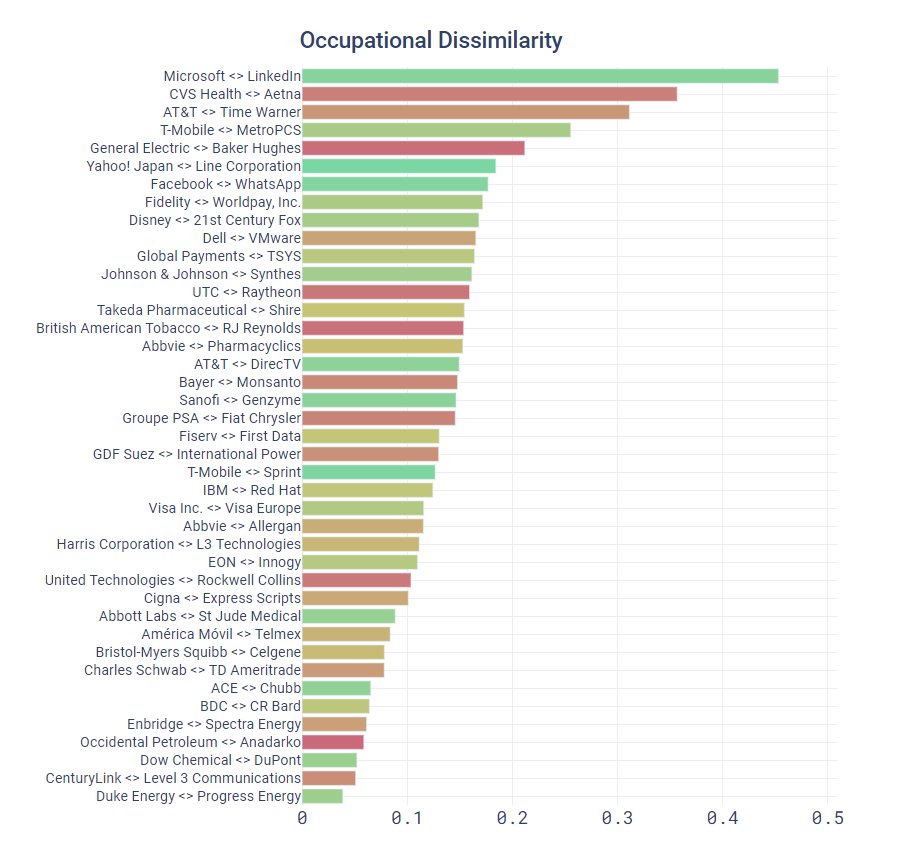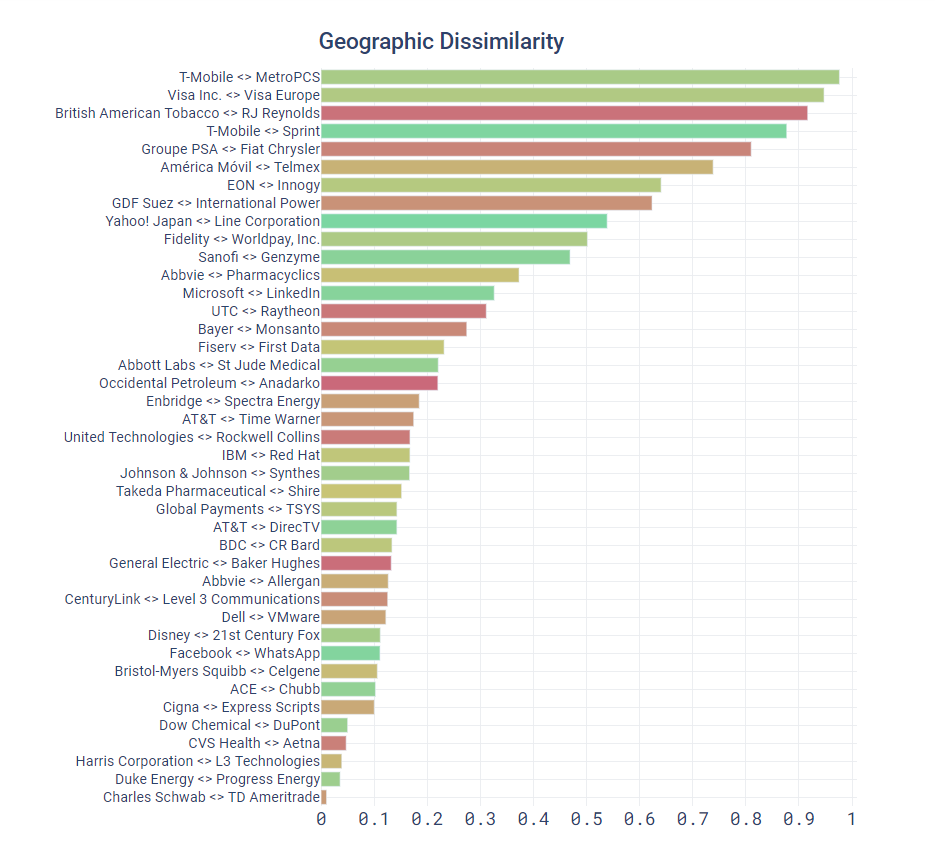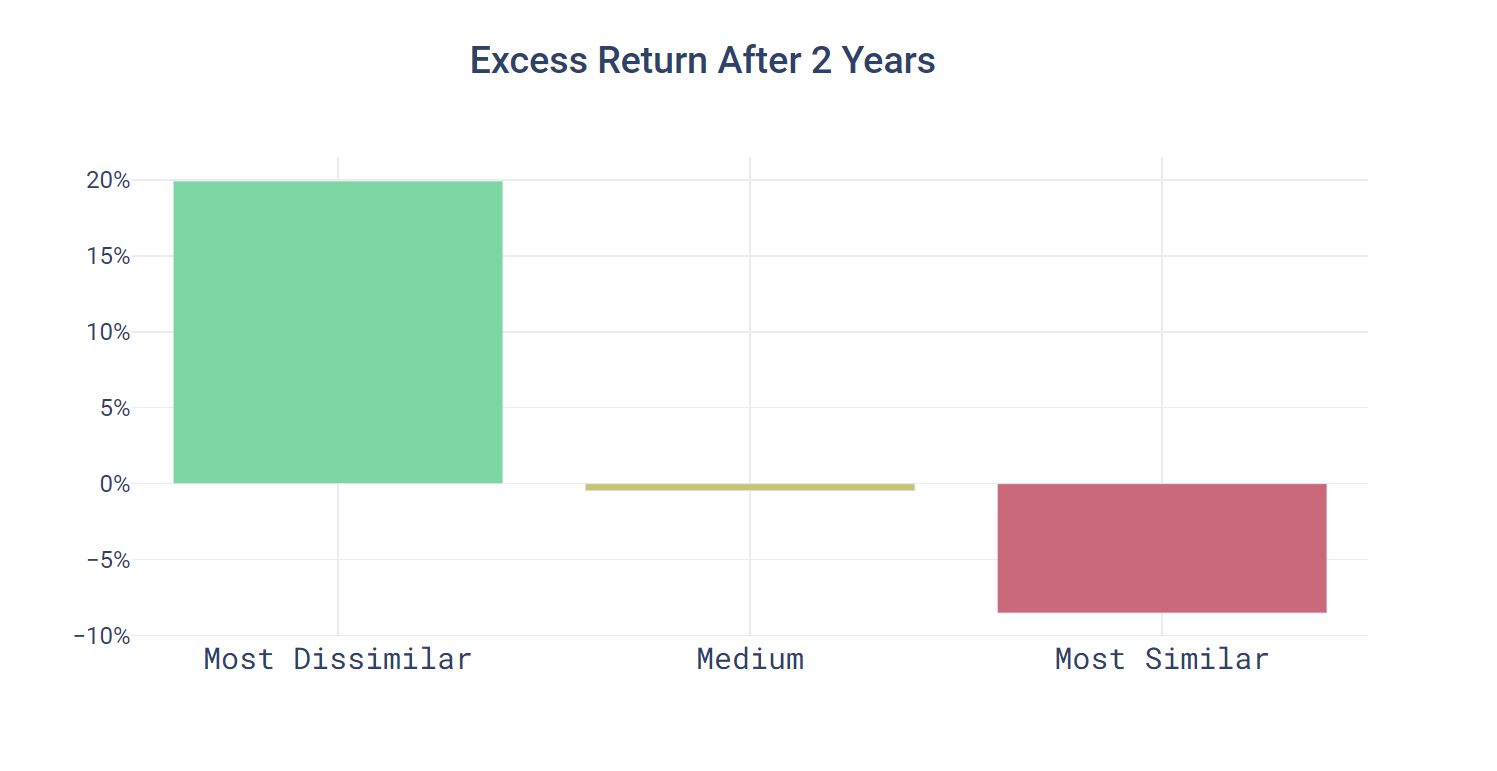
Understanding the long term effects of two merging companies is complex. There are the melding of cultures, product lines, egos, and, not to mention, workforces. With all these complex variables, it’s no wonder so many mergers fail, and even more miraculous when some wildly succeed.
So what makes a good or bad merger, and how can we predict them better?
By studying how workforces complement each other – both by occupation and geographically – we see a strong correlation in mergers between diverse companies and higher stock price.
Below are a list of top mergers with their occupational differences. The color of the bar represents the excess return of the parent company beyond the average stock market two years later:

Below are a list of top mergers with their geographic differences:

After grouping companies by their average dissimilarity, from both occupations and geography, we find strikingly divergent stock performance two years after the mergers:

Takeaways:
To learn more about the data behind this article and what Revelio Labs has to offer, visit https://www.reveliolabs.com/.







Sign up to receive our stories in your inbox.
Data is changing the speed of business. Investors, Corporations, and Governments are buying new, differentiated data to gain visibility make better decisions. Don't fall behind. Let us help.













Sign up to receive our stories in your inbox.
Data is changing the speed of business. Investors, Corporations, and Governments are buying new, differentiated data to gain visibility make better decisions. Don't fall behind. Let us help.





